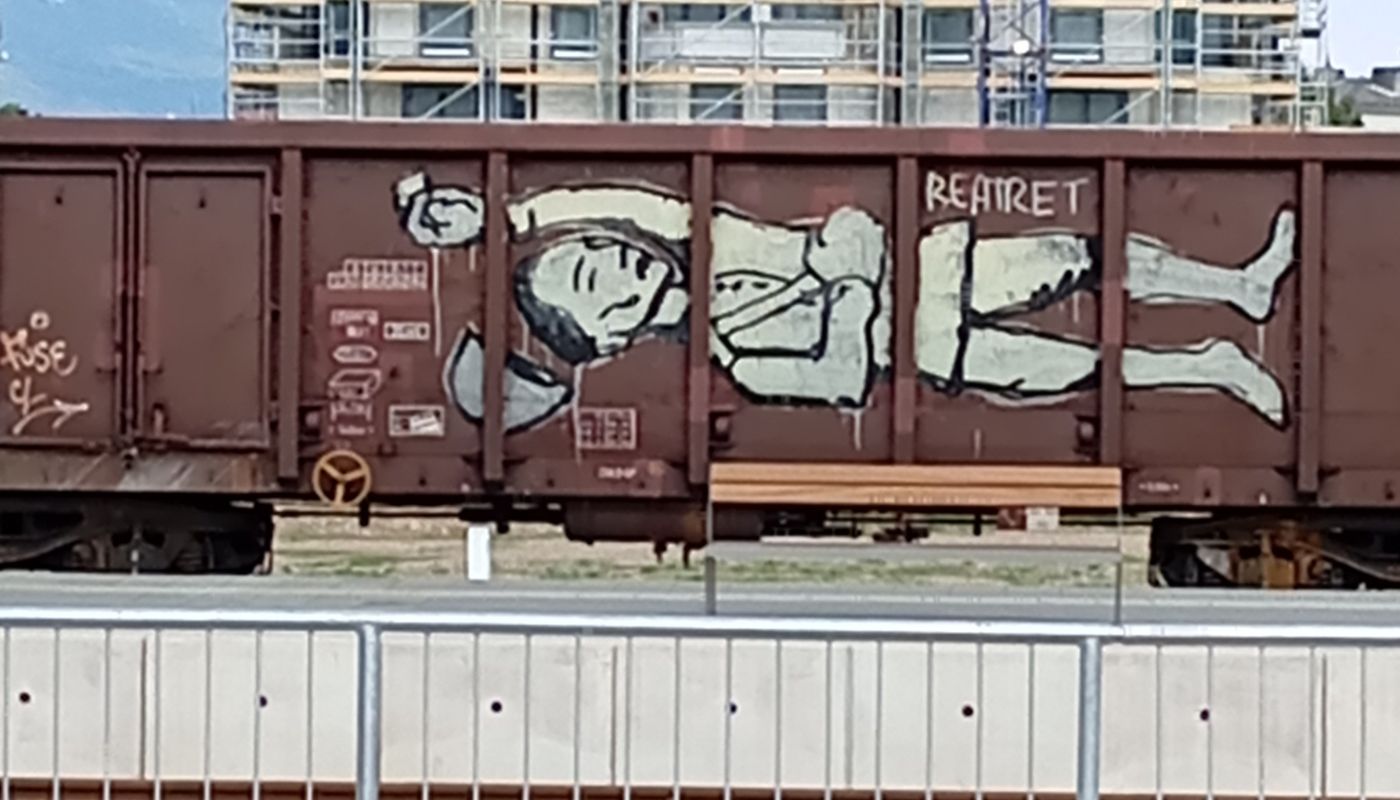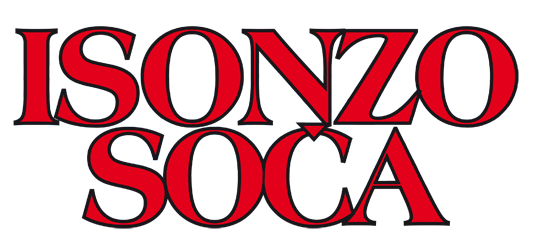
A WALK IN THE SQUARE
by LUCIO FABI
A walk in Piazza Transalpina/Europe (but only one name, perhaps shared, right?) clarify to the visitor the peculiarities of this city on the border. Or of the two cities with the border in between, as you prefer. The symbols of the past divided by a “cold” war that saw two irremediably antagonistic blocs opposed, have now become good for a souvenir photo. A selfie on the mosaic, a polish at the 57/15 memorial stone placed in a corner, a beer at the bar and, when open, a dutiful visit to the museum of the symbols of the past.
The imposing station built at the beginning of the century for the new line that connected Vienna to Trieste, the Transalpina, is undoubtedly the star of the place. It was supposed to constitute the urban expansion of the city towards the east and instead, thanks to two world wars, it ended up representing, with the new city that was being built around it, the symbol of an “other” country, a “different” way of living and thinking, for the people of Gorizia and for the Western world.
Today this is no longer the case, fortunately. Just take a look at the panorama that surrounds it, to realize it. The skyline that can be glimpsed in the distance is made up of modern buildings, with bold and postmodern lines, some still under construction. They are perceived as places of residence for offices, shops, wealthy families. Very different from the historic “Russian Blocs” wanted for the first inhabitants of the new city. Who will go to live in these modern tenements? Nova Gorica, although “younger” than Gorizia, is in a demographic phase of stagnation, if not negative. Houses cost a lot, and not a few prefer to buy for less in Gorizia. Immediately behind these buildings, a large commercial area, with shops of all kinds, which attract a varied clientele from the two cities and their surroundings. And then one wonders why the shops disappear from Gorizia and there are so many sales notices on the closed shutters.
Indifferent. The tourist who wanders around the two cities in these days of late May attracted by the GO2025 advertising hype finds himself in the middle of History, the festival of books and its authors, has the perception of having happened to be in a lively and culturally advanced city. Thanks to the magnanimity of an important financial foundation, he can even admire an important painting by Caravaggio. At Palazzo Attems, the former seat of the provincial museums, today a fiefdom of regional culture (but how will it end, now that the Provinces are to be reintroduced?), the important exhibition of the painter Zoran Mušič, who emerged alive from the hell of Dachau, demonstrates once again the will of art to survive the horrors of war.
The square itself, now that it is no longer divided by the metal mesh that protected the border, appears, it is a place of exchange and sharing. Nothing recalls that troubled historical period, fixed only in the minds of those Gorizia people (but not only) who still do not surrender to the evidence of the facts, who still want to feed on the demons and poisons of a historical period that is now over. They are not few, they often remain silent, but at certain times they re-propose their logic of opposition and revenge. Then Mussolini, an honorary citizen of the city, lives again, the horrors of the occupying partisans return magnified, the poor unfortunate martyrs of the foibe are called into question by demonstrations and newspapers, young people from Casa Pound and the like walk the streets of the city. Fortunately, there are also manifestations of friendship and brotherhood, such as the very popular cross-border march to unite the two cities, or other initiatives that tell of a collaborative society and not in conflict.
A sign of how the two cities have been able to build relationships of closeness and exchange over time is given by the beautiful exhibition organized not surprisingly in the modern, very popular railway underpass of the Transalpina. With some significant photos and trilingual texts (Slovenian, Italian, English) the exhibition Never mind the borders (“Don’t pay attention to borders”) shows those who still don’t know that, over time, the border has become a place of passage and convenience. The Italian-Yugoslav agreements of the fifties and sixties paved the way for the cross-border economy and small trade, favored by documents (the famous Prepustnica) which allowed free transit to residents. Everyone, on both sides of the border, crossed it to buy goods they needed. Economic convenience was the master. Petrol, cigarettes, meat and vegetables on one side, various tools, jeans and dolls on the other. With consumerism, mutual knowledge grew and the memory of the war faded. Today we have many other wars, which bounce from newspapers and television to the streets, and which still divide the world. Wars that do not bring anything good. The timeless soldier traced with white paint on a freight car of the Transalpina airport remembers him, as I head towards the building that in a few months will house Epic, a historical exhibition on the past and present of the two cities.
La lingua originale di questo articolo è l'Italiano.

